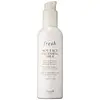What's inside
What's inside
 Key Ingredients
Key Ingredients

 Benefits
Benefits

 Concerns
Concerns

 Ingredients Side-by-side
Ingredients Side-by-side

Water
Skin ConditioningCaprylic/Capric Triglyceride
MaskingCaprylic/Capric/Succinic Triglyceride
EmollientGlycerin
HumectantPentylene Glycol
Skin ConditioningHydrogenated Palm Kernel Glycerides
EmollientGlycine Soja Oil
EmollientXanthan Gum
EmulsifyingHydrogenated Palm Glycerides
EmollientRosa Damascena Flower Water
MaskingHydrolyzed Soy Protein
HumectantCucumis Sativus Fruit Extract
EmollientCentaurea Cyanus Flower Extract
AstringentHibiscus Sabdariffa Flower Extract
Skin ConditioningRosa Damascena Flower Oil
MaskingTocopheryl Acetate
AntioxidantSteareth-21
CleansingCetyl Alcohol
EmollientStearyl Alcohol
EmollientLauryl Glucoside
CleansingPolyglyceryl-2 Dipolyhydroxystearate
Skin ConditioningBehenyl Alcohol
EmollientCeteareth-20
CleansingCaprylyl Glycol
EmollientPolyacrylate-13
Acrylates/C10-30 Alkyl Acrylate Crosspolymer
Emulsion StabilisingPolyisobutene
Tetrasodium EDTA
Sorbitan Isostearate
EmulsifyingCaramel
Cosmetic ColorantPolysorbate 20
EmulsifyingSodium Hydroxide
BufferingMagnesium Aluminum Silicate
AbsorbentSorbic Acid
PreservativeParfum
MaskingBHT
AntioxidantPhenoxyethanol
PreservativeCitronellol
PerfumingGeraniol
PerfumingWater, Caprylic/Capric Triglyceride, Caprylic/Capric/Succinic Triglyceride, Glycerin, Pentylene Glycol, Hydrogenated Palm Kernel Glycerides, Glycine Soja Oil, Xanthan Gum, Hydrogenated Palm Glycerides, Rosa Damascena Flower Water, Hydrolyzed Soy Protein, Cucumis Sativus Fruit Extract, Centaurea Cyanus Flower Extract, Hibiscus Sabdariffa Flower Extract, Rosa Damascena Flower Oil, Tocopheryl Acetate, Steareth-21, Cetyl Alcohol, Stearyl Alcohol, Lauryl Glucoside, Polyglyceryl-2 Dipolyhydroxystearate, Behenyl Alcohol, Ceteareth-20, Caprylyl Glycol, Polyacrylate-13, Acrylates/C10-30 Alkyl Acrylate Crosspolymer, Polyisobutene, Tetrasodium EDTA, Sorbitan Isostearate, Caramel, Polysorbate 20, Sodium Hydroxide, Magnesium Aluminum Silicate, Sorbic Acid, Parfum, BHT, Phenoxyethanol, Citronellol, Geraniol
 Reviews
Reviews

Ingredients Explained
These ingredients are found in both products.
Ingredients higher up in an ingredient list are typically present in a larger amount.
Caprylyl Glycol is a humectant and emollient, meaning it attracts and preserves moisture.
It is a common ingredient in many products, especially those designed to hydrate skin. The primary benefits are retaining moisture, skin softening, and promoting a healthy skin barrier.
Though Caprylyl Glycol is an alcohol derived from fatty acids, it is not the kind that can dry out skin.
This ingredient is also used as a preservative to extend the life of products. It has slight antimicrobial properties.
Learn more about Caprylyl GlycolParfum is a catch-all term for an ingredient or more that is used to give a scent to products.
Also called "fragrance", this ingredient can be a blend of hundreds of chemicals or plant oils. This means every product with "fragrance" or "parfum" in the ingredients list is a different mixture.
For instance, Habanolide is a proprietary trade name for a specific aroma chemical. When used as a fragrance ingredient in cosmetics, most aroma chemicals fall under the broad labeling category of “FRAGRANCE” or “PARFUM” according to EU and US regulations.
The term 'parfum' or 'fragrance' is not regulated in many countries. In many cases, it is up to the brand to define this term.
For instance, many brands choose to label themselves as "fragrance-free" because they are not using synthetic fragrances. However, their products may still contain ingredients such as essential oils that are considered a fragrance by INCI standards.
One example is Calendula flower extract. Calendula is an essential oil that still imparts a scent or 'fragrance'.
Depending on the blend, the ingredients in the mixture can cause allergies and sensitivities on the skin. Some ingredients that are known EU allergens include linalool and citronellol.
Parfum can also be used to mask or cover an unpleasant scent.
The bottom line is: not all fragrances/parfum/ingredients are created equally. If you are worried about fragrances, we recommend taking a closer look at an ingredient. And of course, we always recommend speaking with a professional.
Learn more about ParfumPhenoxyethanol is a preservative that has germicide, antimicrobial, and aromatic properties. Studies show that phenoxyethanol can prevent microbial growth. By itself, it has a scent that is similar to that of a rose.
It's often used in formulations along with Caprylyl Glycol to preserve the shelf life of products.
Sodium Hydroxide is also known as lye or caustic soda. It is used to adjust the pH of products; many ingredients require a specific pH to be effective.
In small amounts, sodium hydroxide is considered safe to use. However, large amounts may cause chemical burns due to its high alkaline.
Your skin has a natural pH and acid mantle. This acid mantle helps prevent harmful bacteria from breaking through. The acid mantle also helps keep your skin hydrated.
"Alkaline" refers to a high pH level. A low pH level would be considered acidic.
Learn more about Sodium HydroxideWater. It's the most common cosmetic ingredient of all. You'll usually see it at the top of ingredient lists, meaning that it makes up the largest part of the product.
So why is it so popular? Water most often acts as a solvent - this means that it helps dissolve other ingredients into the formulation.
You'll also recognize water as that liquid we all need to stay alive. If you see this, drink a glass of water. Stay hydrated!
Learn more about Water